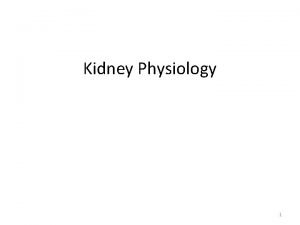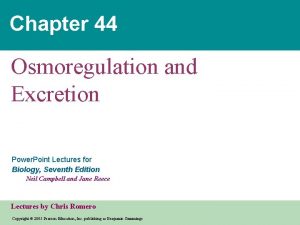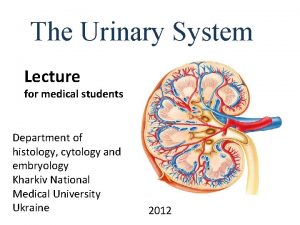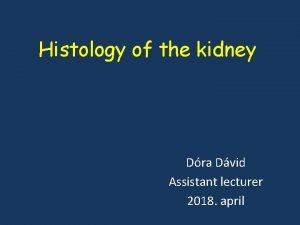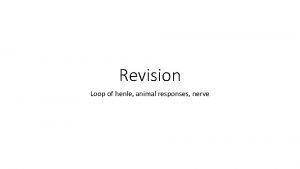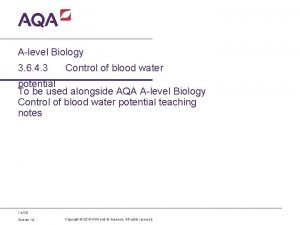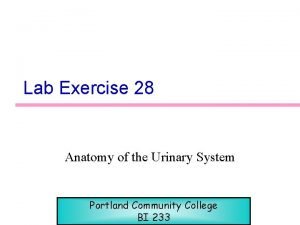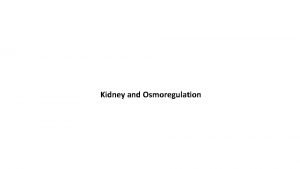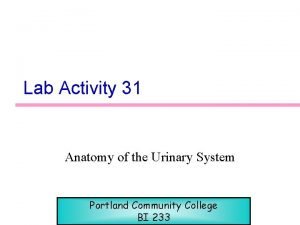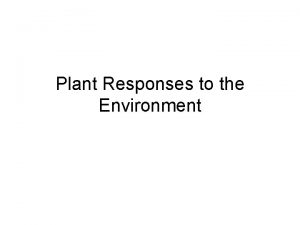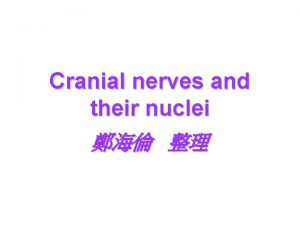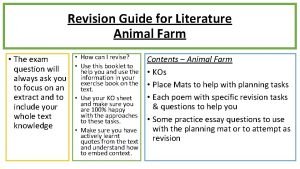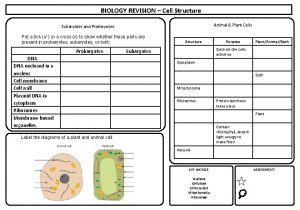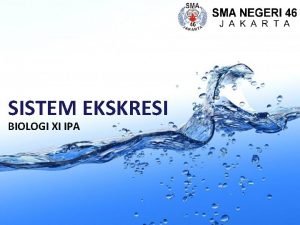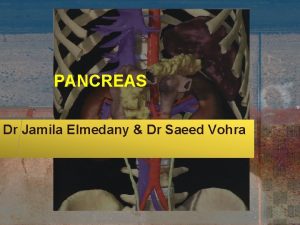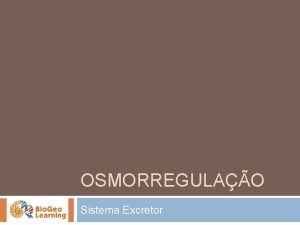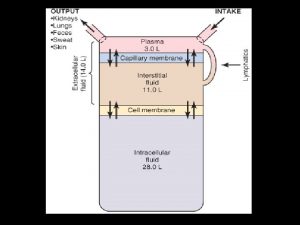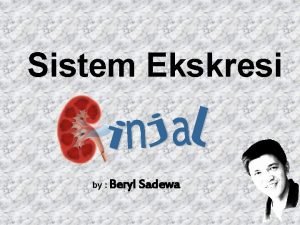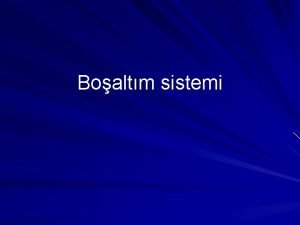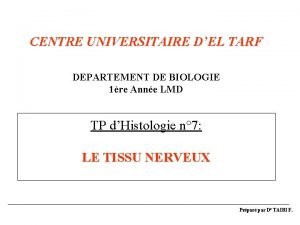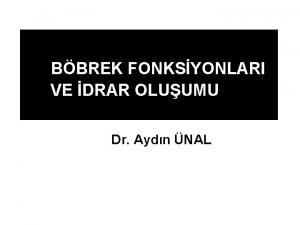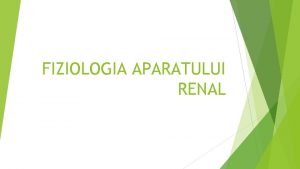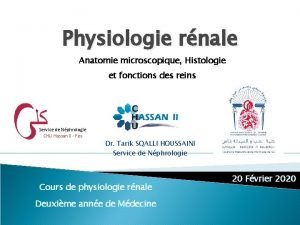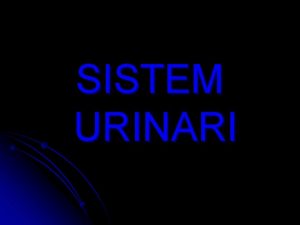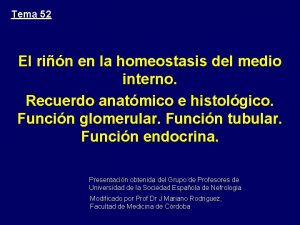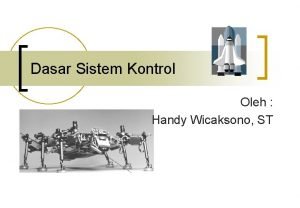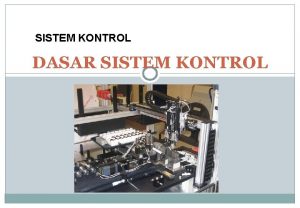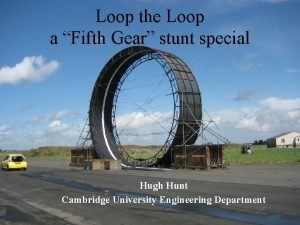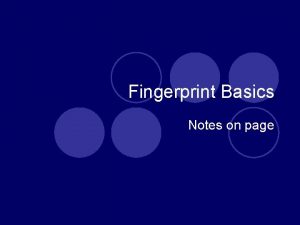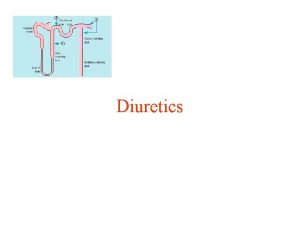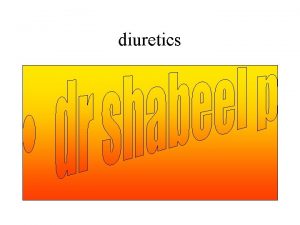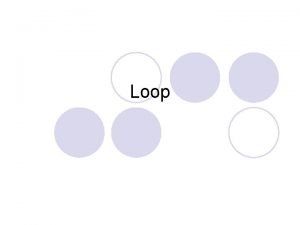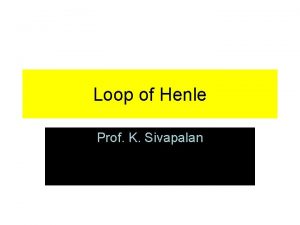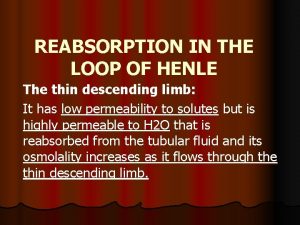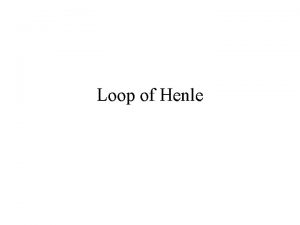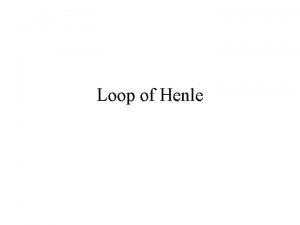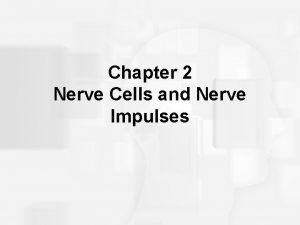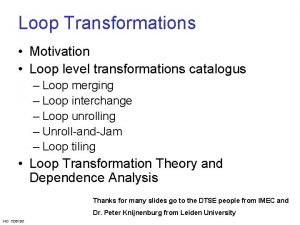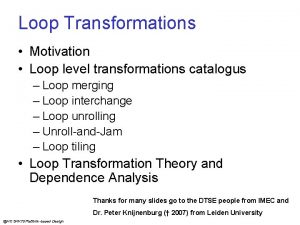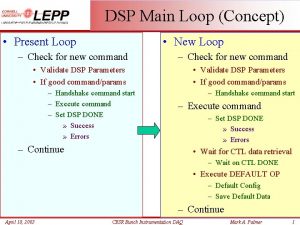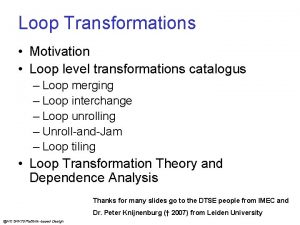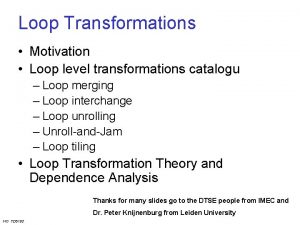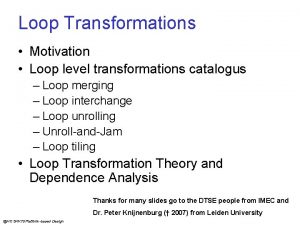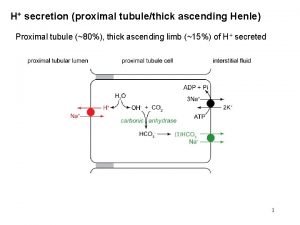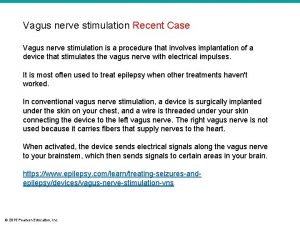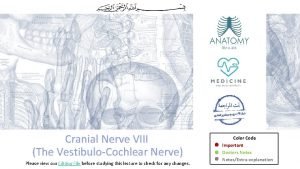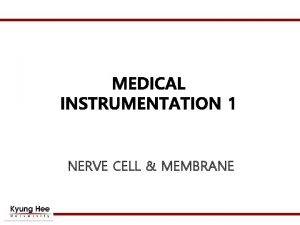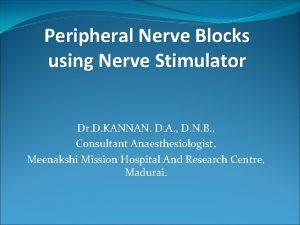Revision Loop of henle animal responses nerve Loop





































- Slides: 37

Revision Loop of henle, animal responses, nerve

Loop of Henle

Loop Of Henle • Important Facts: • In the descending limb the water potential of the fluid is decreased by the addition of mineral ions and the removal of water • In the ascending limb the water potential is increased as mineral ions are removed by active transport

Stage 1 • Na+ and Cl- are actively transported out of the ascending limb

Stage 2 • This raises the Na+ and Clconcentration in the tissue fluid • (lowering the water potential)

Stage 3 • Water is drawn out of the descending limb by OSMOSIS……… • And Na+ and Cl- diffuse in down a concentration gradient

Stage 4 • Removing Water from the limb concentrates the Na+ and Cl- in the descending limb…. .

Stage 5 • So as you go down the limb - Na+ and Cldiffuses out into the medulla • This concentration of the salt in the medulla is called the “Counter. Current Multiplier” • Decrease the water potential in the medulla

Nerves

Roles of sensory receptors • Convert different form of energy in to nerve impulses (transducer) • For Example • Pacinian corpuscle • Pressure is stimulus • Stretch mediated sodium ion channels • • • Closed in resting potential Pressure stretches the membrane Opens the sodium ion channels Depolarises the membrane Generator potential

Sensory Neurone: Structure & Function • Transmit from a receptor to the CNS

Motor Neurone: Structure & Function • Transmit impulses from CNS to effector

Relay Neurone • Transmits from sensory neurone to motor neurone • In the CNS

Compare and contrast structure and function Myelinated Neurones Non-myelinated neurones CNS & Somatic nervous system Autonomic nervous system Faster due to saltatory conduction Slower Sped up by myelin sheath (Schwann Cells containing high amount of myelin wrapped around axon) Sped up by increasing diameter of axon

Resting Potential • Potential Difference across the membrane: • Inside has charge of -70 m. V compared to outside • Sodium Potassium Ion Pump • 2 K+ ions in • 3 Na+ ions out • Membrane is impermeable to Na+ but some K+ ions leak out

Action Potential • When membrane is depolarised and pd across the membrane reaches -40 m. V (generator potential) Voltage gated Na+ channels open Sodium ions move in (DEPOLARISATION) Changes pd to +40 m. V Na+ channels close & voltage gated K+ channels open (REPOLARISATION) • Changes pd to about -75 to -90 m. V (HYPERPOLARISATION) • Most of K+ channels close and Na+/K+ pump restores resting potential • •

Action Potential: Transmitted in a Myelinated neurone • Nerve impulse jumps from one Node of Ranvier to the next • Saltatory Conduction • Presence of action potential at one node sets up depolarisation at the next (local circuit) • Refractory Period • When membrane is hyperpolarised another action potential can’t form: action potential can only go one way

Action Potential: Voltage Graph

Structure of the Cholinergic Synapse

Role of Neurotransmitters: How a synapse works 1. Action potential reaches axon terminal 2. Calcium ion channels open and calcium ions move in 3. Synaptic vesicles fuse with presynaptic membrane (requires ATP) 4. Acetylcholine (ACh) diffuses across gap and binds to receptors on postsynaptic membrane 5. Na+ channels open and action potential occurs 6. Acetylcholinesterase breaks down ACh and choline is absorbed through presynaptic membrane

Roles of the Synapse in the Nervous System • One direction of transmission • May be excitatory or inhibitory • Spatial summation • When two synapses on the same neurone get action potentials at same time depolarisation of postsynaptic membrane is greater • Temporal summation • When two action potentials arrive one after the other the depolarisation of the postsynaptic membrane is greater

Animal Responses

Organisation of Nervous System • Central • Brain and spinal cord • Grey (non myelinated) and white (myelinated) matter • Peripheral • Neurones that carry impulses in and out of CNS • Sensory neurones carry impulses from receptors to CNS • Motor neurones carry impulses from CNS to effectors • Somatic: voluntary (conscious) control • Autonomic: not under voluntary control e. g. to heart, gut

Peripheral Nervous System • Somatic Nervous System • Concious control • Used when you decide to do something • Autonomic Nervous System • Non-myelinated neurones • Connect to the effectors with at least two neurones (which join at a ganglion) • Two Types antagonistic to each other • Sympathetic • Most active in times of stress • Neurotransmitter is noradrenaline • Pre ganglionic neurones are very short as ganglion is near the CNS • Parasympatheric • Most active in sleep and relaxation • Neurotransmitter is acetyl choline • Pre ganglionic neurones are longer as ganglion is within target tissue

Gross Structure of the Brain

Functions • Cerebrum • Largest part, 2 hemispheres connected by corpus callosum, controls higher brain functions • Conscious thought & emotions • Override some reflexes • Reasoning and judgement • Cerebellum • Coordinates motor responses • Processes sensory information from eye, ear, spindle fibres & joints • Medulla oblongata • Controls non-skeletal muscles (e. g. heart and lung) • Controls autonomic nervous system • Hypothalamus • Controls homeostatic mechanisms e. g. Osmoregulation • Regulates pituitary gland (so controls endocrine function) • Pituitary Gland • Controls most glands in the body • Anterior makes hormones • Posterior stores and releases hormones

Reflex Arcs • Reflex arc • Receptor Sensory neurone Relay neurone Motor neurone Effector • Knee Jerk • Stretching of the patella tendon causes the extensor muscle to contract and the hamstring muscle to relax, causing the leg to kick • Spinal reflex • Blinking • Corneal stimulus causes the eye lids to close • Enables survival • Born with, involuntary, very fast • Avoid hurt

First and Second Messengers: adrenaline & c. AMP • Adrenaline doesn’t enter the target tissue • Adrenaline is the first messenger • Adrenaline binds to receptor on cell surface, activating adenyl cyclase inside the cell • Adenyl cyclase increases concentration of c. AMP • c. AMP is the second messenger • c. AMP activates cascade of enzymes

Control of Heart Rate in Humans Hormonal Nervous Adrenaline (increase) Accelerator Nerve (increase) - Stretch receptors in muscles - Low blood p. H Vagus Nerve (decrease) - High bp detected by carotid sinus

Sliding Filament Model of Muscle Contraction

Sliding Filament Model of Muscle Contraction • Two types of protein involved • Thick filament • Bundles of myosin • One tail, two heads • Thin filament • 2 strands of actin coiled round each other • Tropomyosin coiled round the actin • Troponin has 3 binding sites: binds to tropomyosin, actin and a free one for calcium ions

Sliding Filament Model of Muscle Contraction 1. Calcium ions bind to troponin changing its shape so myosin can bind to the actin 2. Myosin head attaches to actin (forming a cross bridge) 3. Myosin head bends pulling thin filament along (more overlap) • Uses ATP, so making ADP and inorganic P 4. Cross bridge broken as ATP binds to myosin head 5. Head group moves back as ATP is broken down and then forms new crossbridge with actin

Role of ATP in muscle contraction • Energy required to break crossbridge • Supply only sufficient for 1 -2 secs contraction • ATP supply maintained by • Aerobic respiration • Anaerobic respiration • Phosphate group from creatnine phosphate used to turn ADP into ATP

Compare & contrast synapses and neuromuscular junctions Compare Contrast • Neurotransmitter in vesicles • Action potential causes neurotransmitter to be released into cleft • Neurotransmitter diffuses across gap and binds to receptors • Binding of neurotransmitter results in depolarisation • Enzymes degrade neurotransmitter Synapse Neuromuscular junction • Neurone to neurone • Action potential caused in post synaptic neurone • Synaptic knob is smooth • Neurone to sarcomere • Depolarisation in sarcolemma caused • End plate has microvilli

Outline structural and functional differences between voluntary, involuntary and cardiac muscle Voluntary Involuntary Cardiac • Cells form long fibres • Short spindle shaped cells • Cells form branched fibres • Contracts and fatigues quickly • Contracts and fatigues slowly • Contracts quickly and doesn’t fatigue • Under voluntary nervous control • Under autonomic nervous control • Contraction in myogenic but autonomic controls rate • Involved in voluntary movements of bones • Involved in involuntary movement of tubes e. g gut • Involved in pumping blood around body • Striated appearance • Un-striated appearance • Striated appearance

Mammals • Responses to environmental stimuli are coordinated by nervous and endocrine systems

‘Fight or Flight’ • Balance between sympathetic and parasympathtic nervous system being changed • Hypothalamus stimulates both nervous system and endocrine system • Nervous system • Activates glands in smooth muscle • Activates adrenal medulla • Releasing both noradrenaline and adrenaline • Endocrine system • Anterior pituitary releases Corticosteroid Releasing Factor • Pituitary gland secretes ACTH • ACTH causes release of many hormones from adrenal cortex
 Physiology of kidney
Physiology of kidney Why do desert animals have longer loop of henle
Why do desert animals have longer loop of henle Tubular lumen
Tubular lumen Loop of henle
Loop of henle Juxtaglomerular apparatus and macula densa
Juxtaglomerular apparatus and macula densa Loop of henle
Loop of henle Loop of henle function
Loop of henle function Loop of henle
Loop of henle Loop of henle
Loop of henle Ascending loop of henle
Ascending loop of henle Why do desert animals have longer loop of henle
Why do desert animals have longer loop of henle Vasa recta histology
Vasa recta histology Revision passive
Revision passive Plant and animal responses
Plant and animal responses Trigeminal nerve which cranial nerve
Trigeminal nerve which cranial nerve Stout motherly mare meaning
Stout motherly mare meaning Animal cell diagram biology
Animal cell diagram biology Gambar badan malpighi
Gambar badan malpighi Angulo de traitz
Angulo de traitz Henle trunk
Henle trunk Nefronio
Nefronio Hasselbalch equation
Hasselbalch equation Tubulus kontortus proksimal
Tubulus kontortus proksimal Detrusor kası
Detrusor kası Gaine de henlé
Gaine de henlé Henle kulpu inen kol
Henle kulpu inen kol Impregnare argentica
Impregnare argentica Gaine de henlé
Gaine de henlé Ansa lui henle
Ansa lui henle Appareil juxta glomerulaire
Appareil juxta glomerulaire Pengosmokawalaturan oleh ginjal
Pengosmokawalaturan oleh ginjal Asa de henle funcion
Asa de henle funcion Multi loop pid controller regolatore pid multi loop
Multi loop pid controller regolatore pid multi loop Manakah yang lebih baik open loop atau close loop system
Manakah yang lebih baik open loop atau close loop system Kompor lpg termasuk open loop atau close loop
Kompor lpg termasuk open loop atau close loop Perbedaan for while do while
Perbedaan for while do while Fifth gear loop the loop
Fifth gear loop the loop Arch loop whorl
Arch loop whorl
